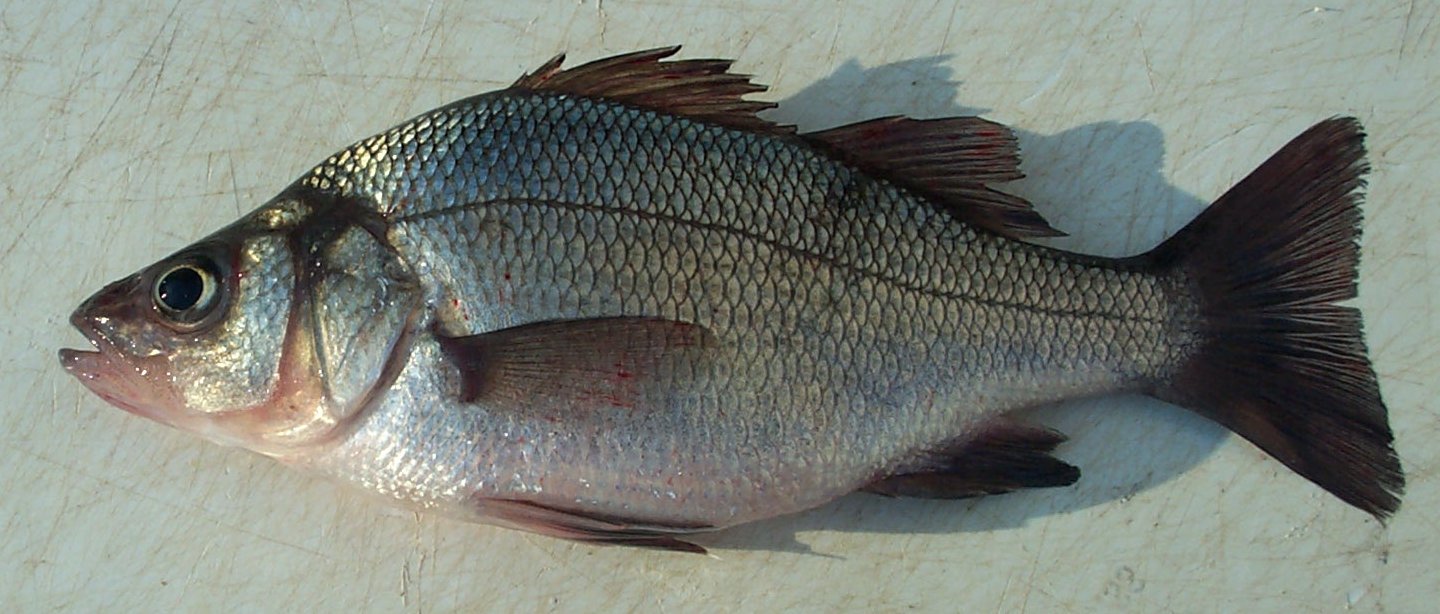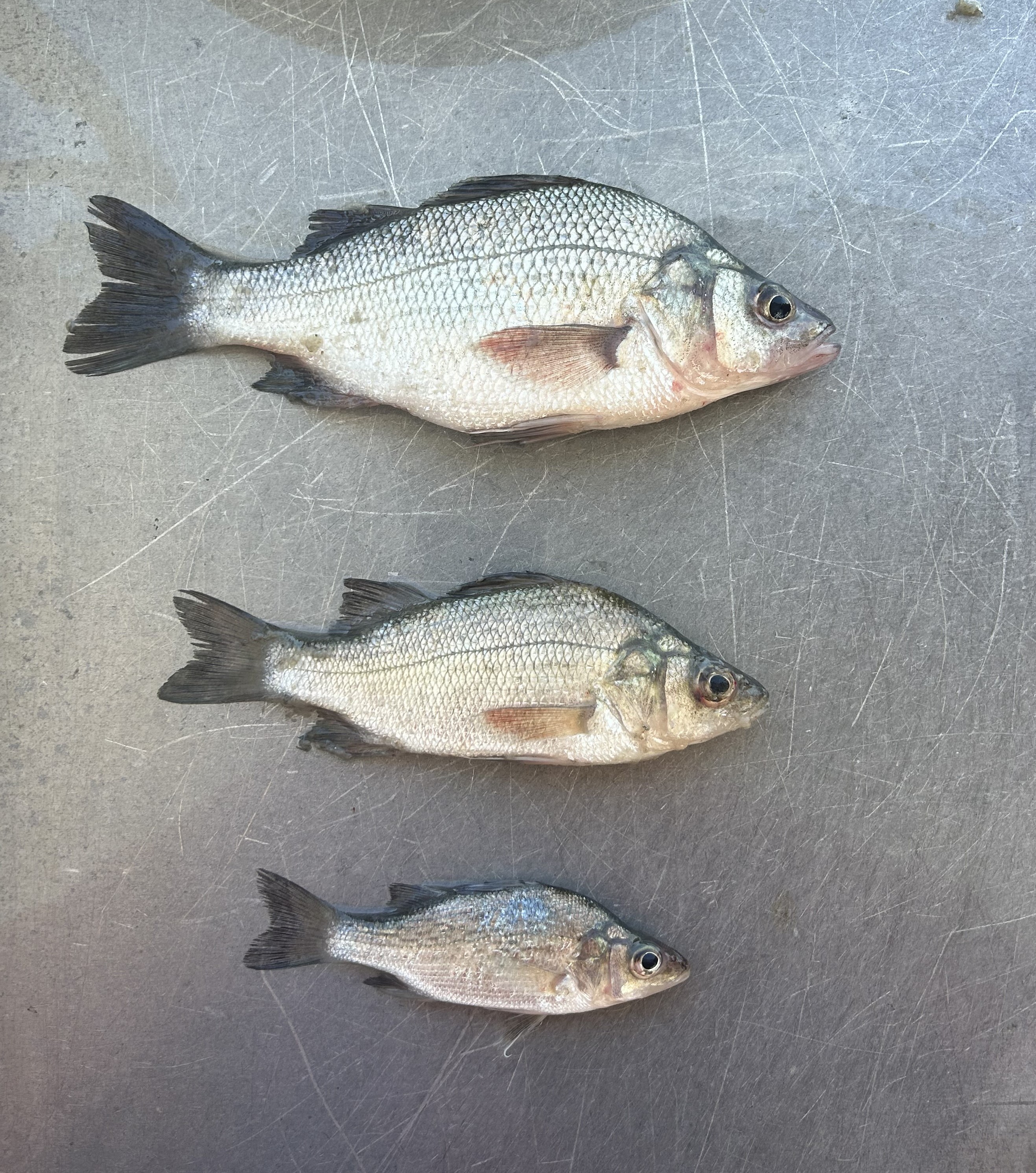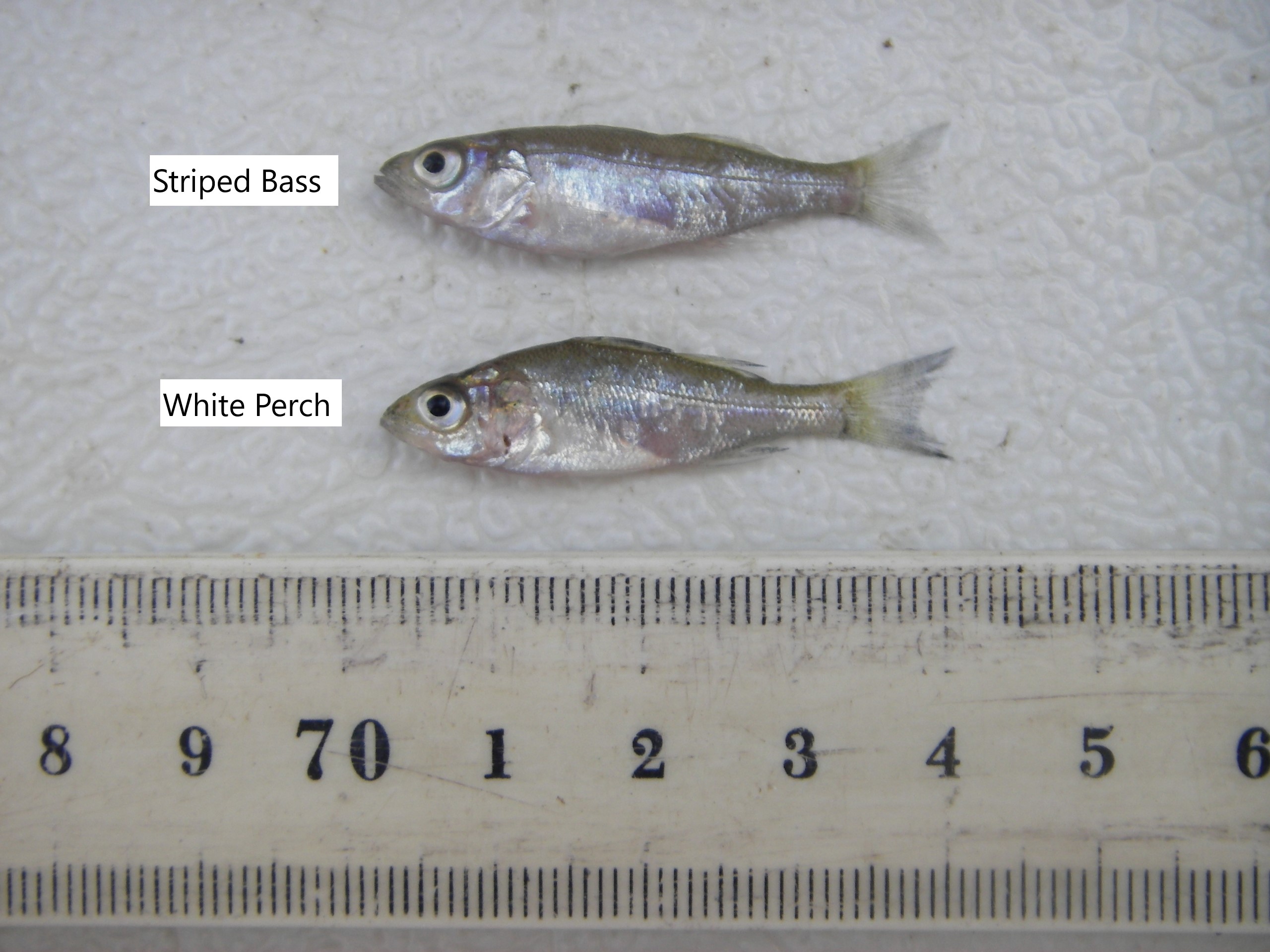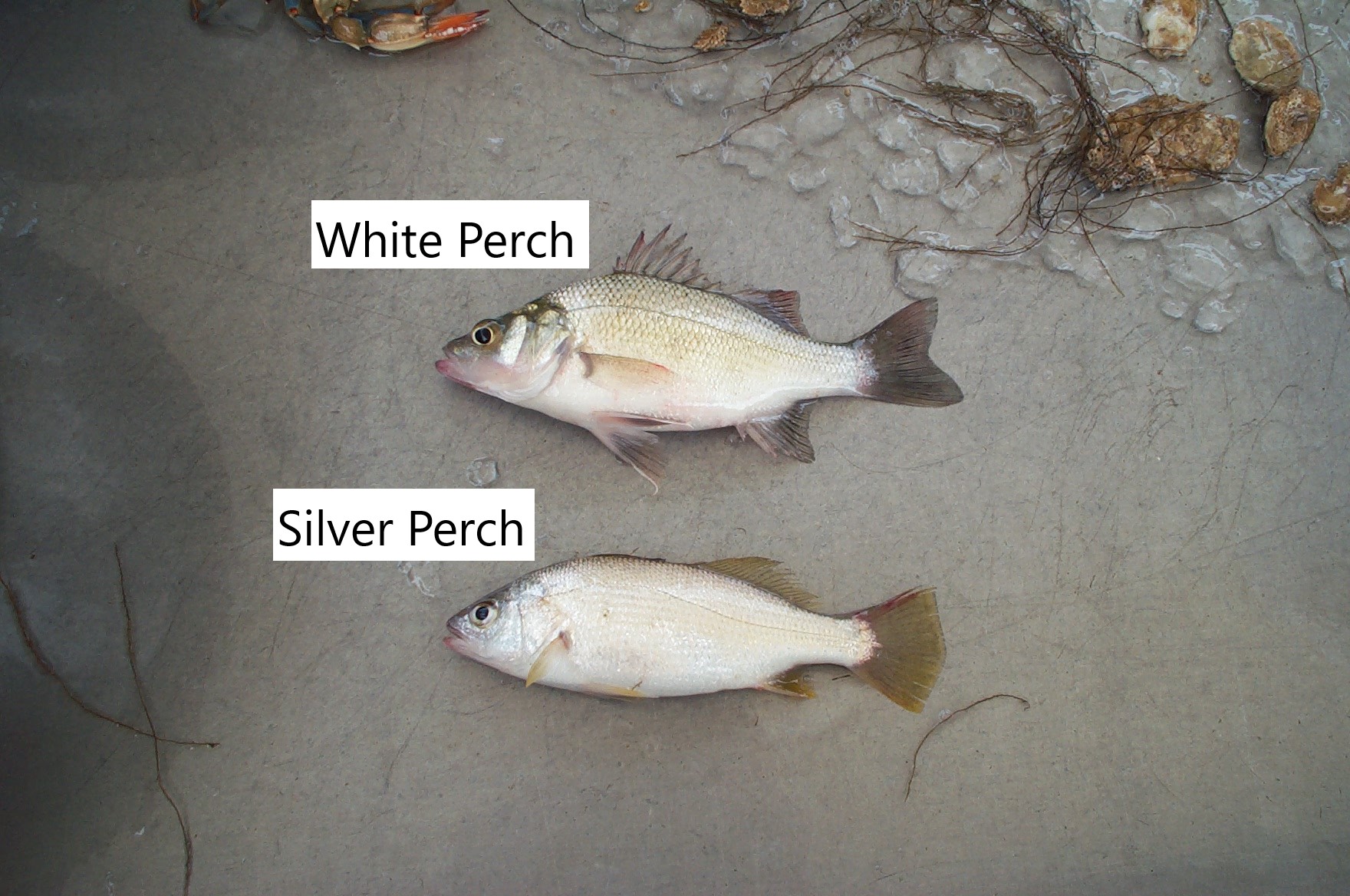White Perch
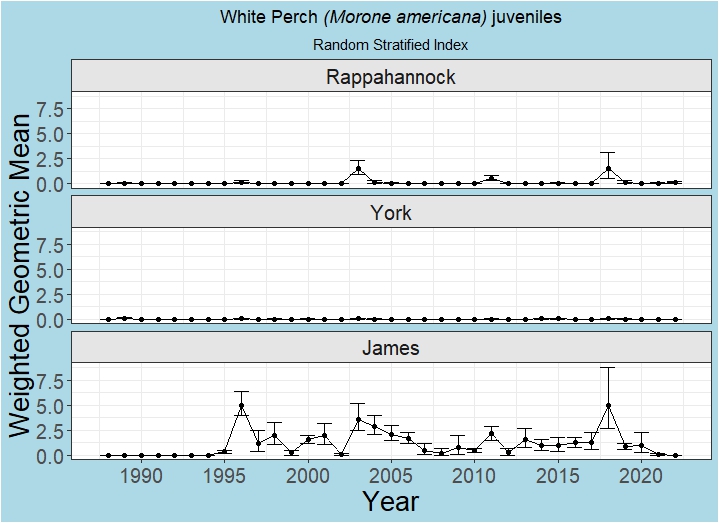
- This species first recruits to the survey gear in May.
- The Young-of-Year cutoff values are:
- August: 0-80 mm.
- September: 0-85 mm.
- October: 0-85 mm.
- November: 0-130 mm.
- December: 0-165 mm.
- January: 0-165 mm.
- February: 0-165 mm.
- March: 0-165 mm.
- April: 0-95 mm.
- May: 0-35 mm.
- June: 0-65 mm.
- July: 0-73 mm.
- Index months are in bold.
- In 2018, the recruitment window for juvenile White Perch was changed from the period December to February to the new period between August and October. Similarly, the recruitment window for White Perch age 1+ was changed from November to February to the new period between August and October.
- Because White Perch are restricted in their distribution, an index of abundance is calculated for each tributary. Only stations in the upper portions of the river are used.
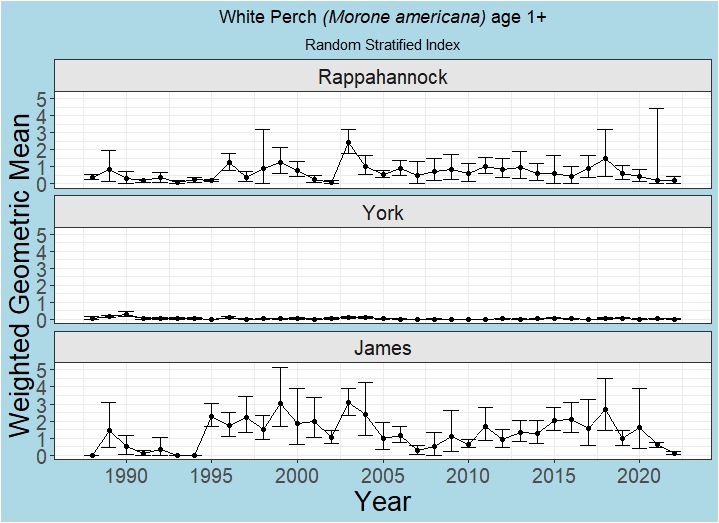
Data collected after the transition to a new vessel and net (June 2015) have been adjusted by a species-specific calibration factor.


